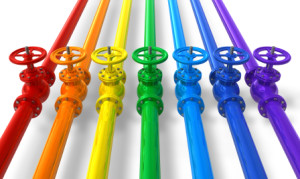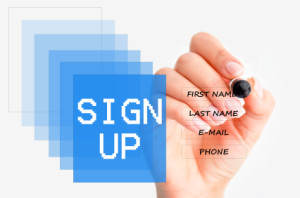Are Your 2013 B2B Sales Struggling? Here’s Why:
 How to Increase the success of your B2b sales and marketing approach
How to Increase the success of your B2b sales and marketing approach
If you are a part of the sales world, you know that the sales cycle does not look anything like it did a few years ago. In our work at Gabriel Sales, a B2B outsourced sales company and B2B sales and marketing company, we have been closely following these changes in order to help our clients navigate the new sales landscape.
The first thing we have discovered is that in some instances, buyers are buying faster. Buyers now often make decisions immediately following their budget approval, shortening the decision process to less than 60 days in some cases.
However, while about 20% of buyers are now reaching out faster for smaller purchases, there are still buyers who prefer buying via more traditional buyer relationships. There are also buyers who are now spending more time in the research phase, preferring to explore all of their options thoroughly before making a decision.
What all of this comes down to is that buyers are no longer as predictable or homogenous as they once were. If your business is not able to adapt to the changing trends of the B2B sales industry, you stand to lose up to 10%-20% of your revenue to competitors who have adapted their process and techniques. In order to make sure you can sell to your customers regardless of how they prefer to buy, you need to have a strong content marketing program in place, strong inbound and strong cold calling. The rest of this blog will briefly discuss the best practices for meeting the demands of today’s B2B sales landscape.
Marketing Automation Implementation
Our experience as a B2B marketing and sales company tells us that using Marketing Automation Software is quite possibly the most effective thing a business can do to improve its sales and give them an advantage over their competitors. Marketing Automation can increase your B2B demand generation across different buying cycles.
This type of software permits marketers to generate, score and nurture leads in a new, more efficient way. For some smaller businesses, we have even been able to combine this software with some of our proprietary tools in a way that eliminates the need for marketing as a function. This allows you to give the demand generation tools to your sales reps in order to decrease cost and increase productivity.
We believe the main reason many B2B companies do not find success with this type of software is they do not allow the sales team to propel its implementation. These companies have not yet seen the value of incorporating a top salesperson’s process as a part of their overall demand generation process.
Lead Scoring
One of the biggest advantages of implementing marketing automation software is improved efficiency in terms of scoring leads. This allows your sales reps to concentrate their phone time on the most qualified leads. These marketing software tools have lead scoring and nurturing features that allow you to watch and score the way your prospects are interacting with your online content and follow-up emails. Once a lead has a score that suggests they are ready to buy, your lead generation reps can make that lead a priority. They can then contact these leads directly for final qualification steps to convert them to sales qualified leads.
Committed Demand Generation Team
We believe having a team dedicated to converting marketing qualified leads into sales qualified leads is the key to success in terms of demand generation. Many companies try to have the sales team complete this task in order to shorten the cycle, but we have found this rarely achieves long-term success. While working this way may put you at an advantage with the 20% who now prefer to buy quickly, you lose all of the buyers who like to buy differently. Demand generation programs only work when the level of commitment from the demand generation team matches the capacity of the tools they are using.
If you would like to learn more about how sales outsourcing for B2B can help you align your inbound and outbound efforts for a fatter pipe and more closed revenue please feel free to CONTACT US for a free initial strategy conversation.

 Landing page design is all the rage for B2B demand generation tactics in 2013. However, having glitzy graphics or a colorful layout will only get you so far. What we have seen in our work as a B2B demand generation and sales and marketing outsourcing company is that the content of the page is much more important than what it looks like.
Landing page design is all the rage for B2B demand generation tactics in 2013. However, having glitzy graphics or a colorful layout will only get you so far. What we have seen in our work as a B2B demand generation and sales and marketing outsourcing company is that the content of the page is much more important than what it looks like.

 Many B2B companies try so hard to generate more leads that they do not come up with a clear strategy for how to do so most efficiently and effectively. What these companies do not understand is that a successful campaign requires clearly defined goals and a well-articulated strategy.
Many B2B companies try so hard to generate more leads that they do not come up with a clear strategy for how to do so most efficiently and effectively. What these companies do not understand is that a successful campaign requires clearly defined goals and a well-articulated strategy. Creating successful B2B marketing videos is not like creating a Hollywood blockbuster. The best technical production in the world will not get you anywhere if your content is irrelevant. They key to digital marketing with videos is to provide your customer with something they actually want to watch.
Creating successful B2B marketing videos is not like creating a Hollywood blockbuster. The best technical production in the world will not get you anywhere if your content is irrelevant. They key to digital marketing with videos is to provide your customer with something they actually want to watch.